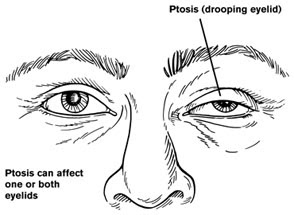 Myasthenia Gravis Definition
Myasthenia Gravis DefinitionMyasthenia Gravis is a neuromuscular transmission disorder affecting the muscles of the body that works under a person's consciousness. Characteristics that appear in the form of excessive weakness and fatigue commonly occur in the muscles of voluntary and it is influenced by cranial nerve function (Brunner and Suddarth 2002).
Myasthenia Gravis is a neuromuscular disorder that affects the transmission of impulses to the voluntary muscles of the body (Sandra M. Neffina 2002).
Myasthenia Gravis Etiology
The cause of this disorder is unknown, but the possibility due to a disruption or destruction of acetylcholine receptors at the neuromuscular junction due to an autoimmune reaction. Damaged muscle contractions cause muscle weakness.
Myasthenia Gravis Clinic Manifestations
- Extreme muscle weakness and prone to fatigue
- Diplopia (double vision)
- Ptosis (eyelid fall)
- Dysphonia (voice disorders)
- Weakness of the diaphragm and intercostal muscles causing progressive respiratory distress.
Basic abnormality in myasthenia gravis is the damage to the transmission of nerve impulses to the muscle cells due to loss of the ability or the loss of post-synaptic membrane of normal receptors at the neuromuscular junction. Research shows a 70-90% decrease in acetylcholine receptors at the neuromuscular junction of each individual. Myasthenia gravis is an autoimmune disease to be considered as being directed against the acetylcholine receptor (ACHR) that damages the neuromuscular transmission.
Nursing Diagnosis for Myasthenia Gravis
1. Ineffective breathing pattern related to respiratory muscle weakness.
2. Impaired physical mobility related to weakness of voluntary muscles.
3. Risk for aspiration related to the weakness of bulbar muscles.